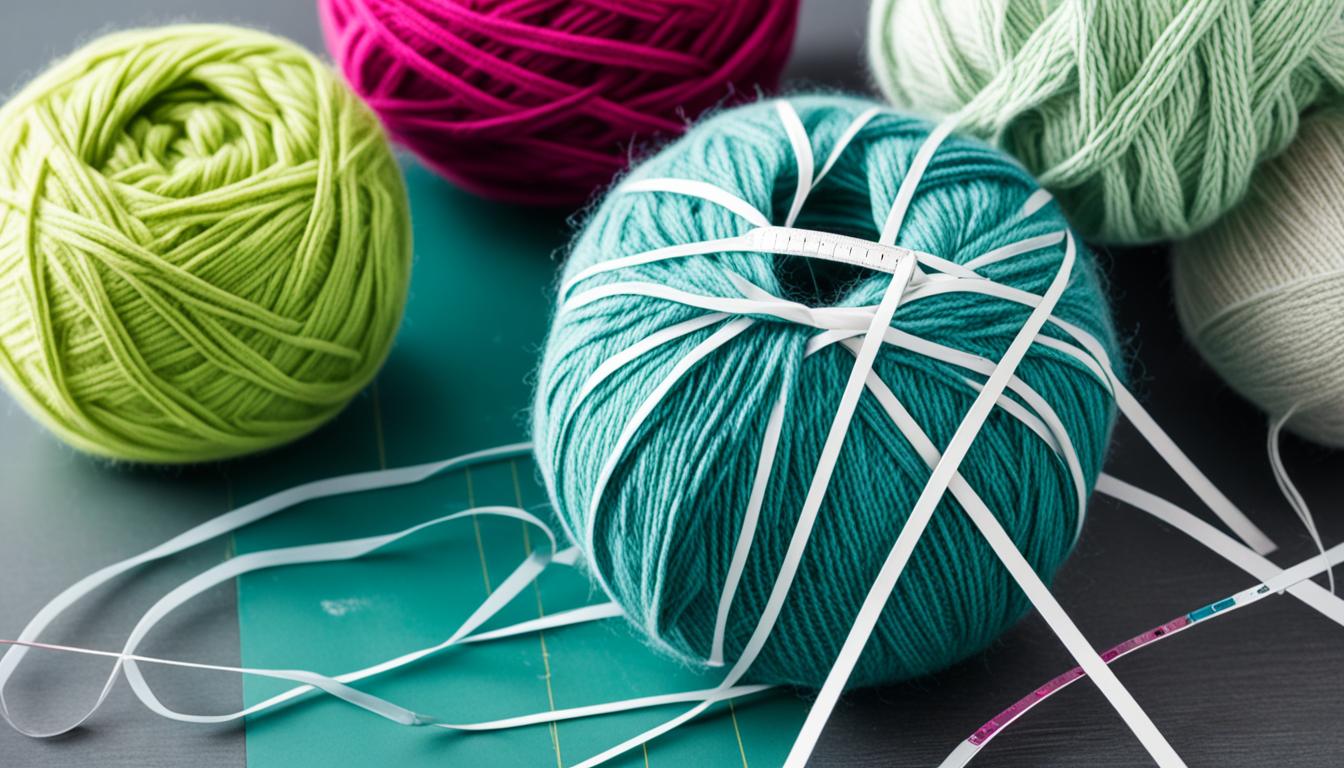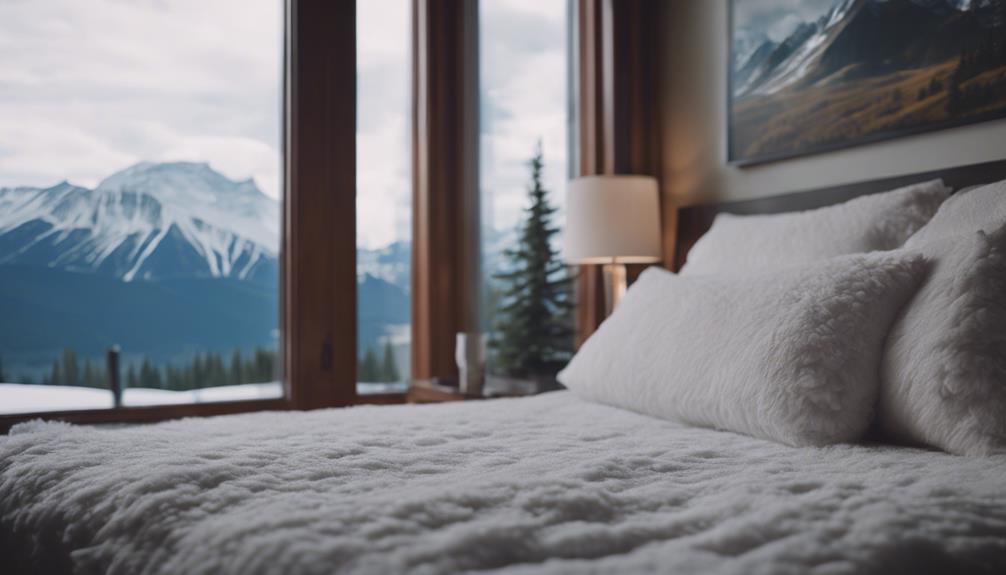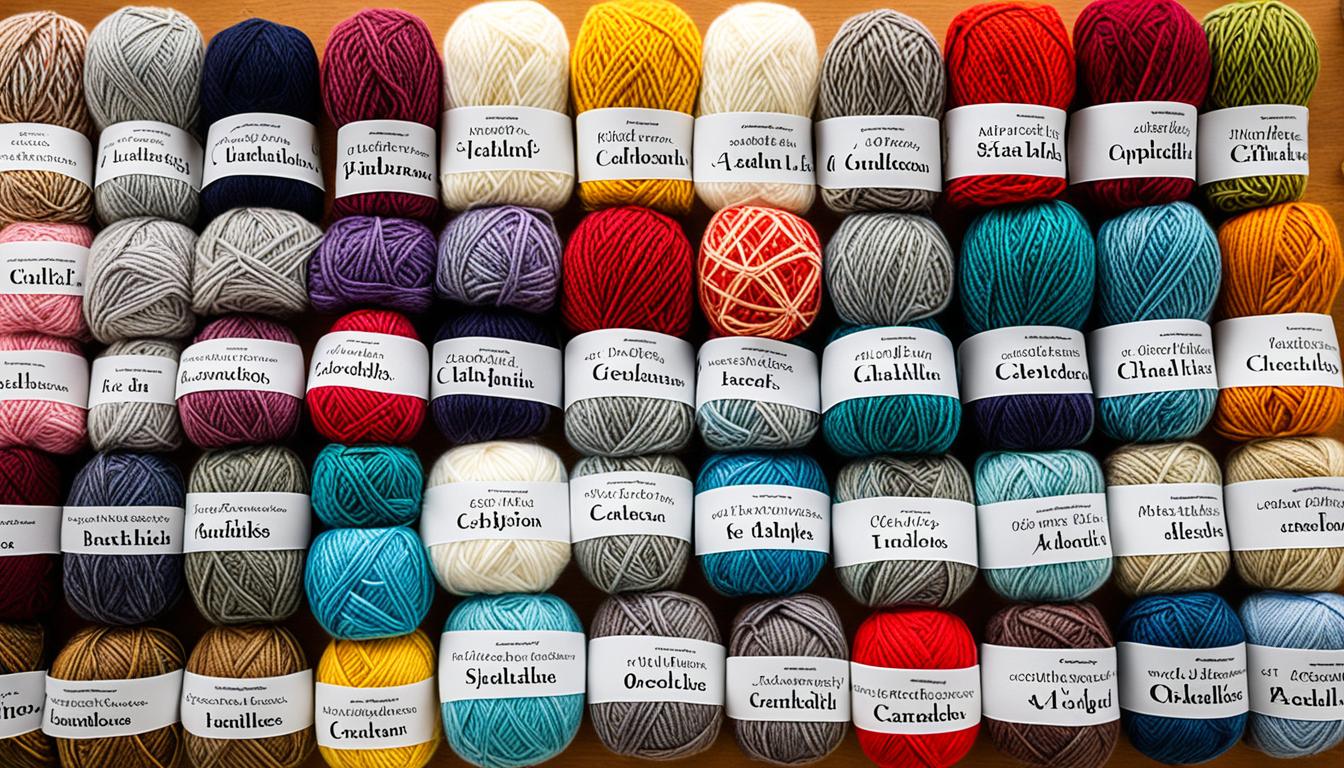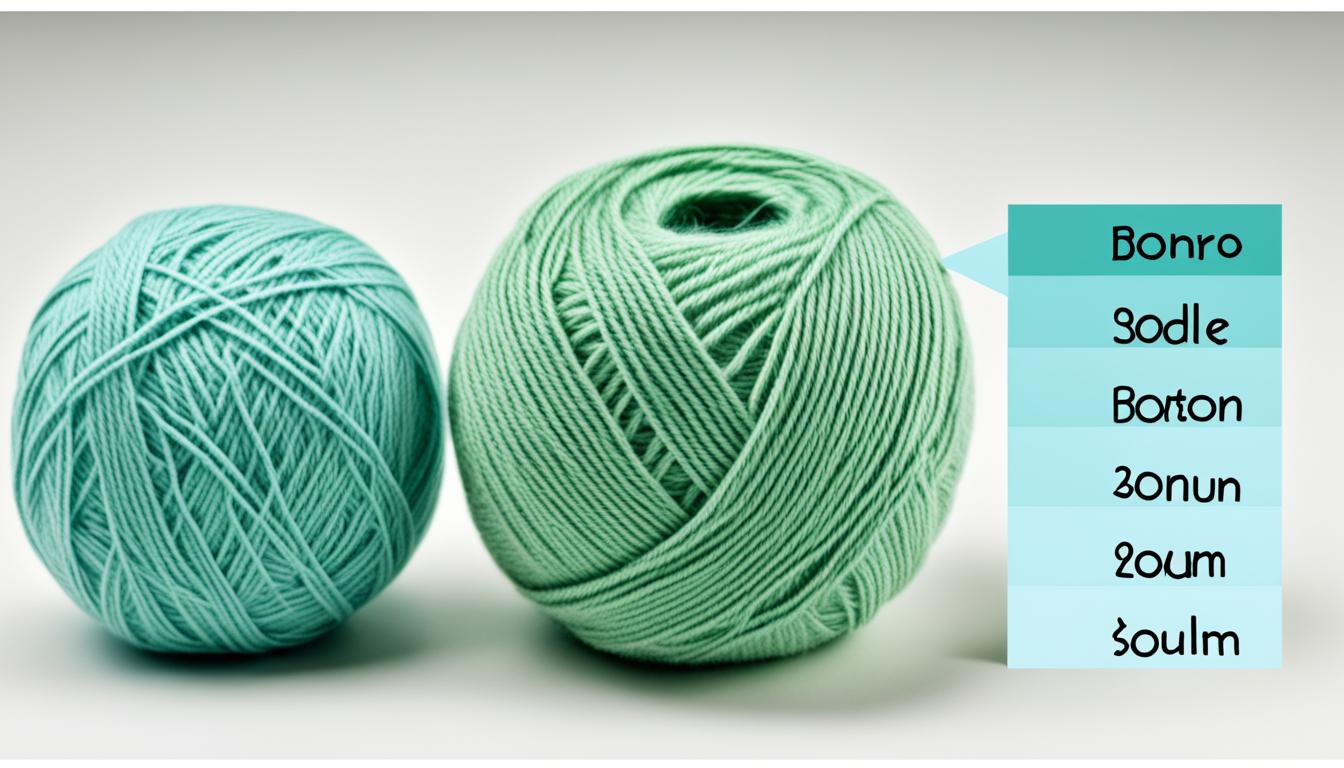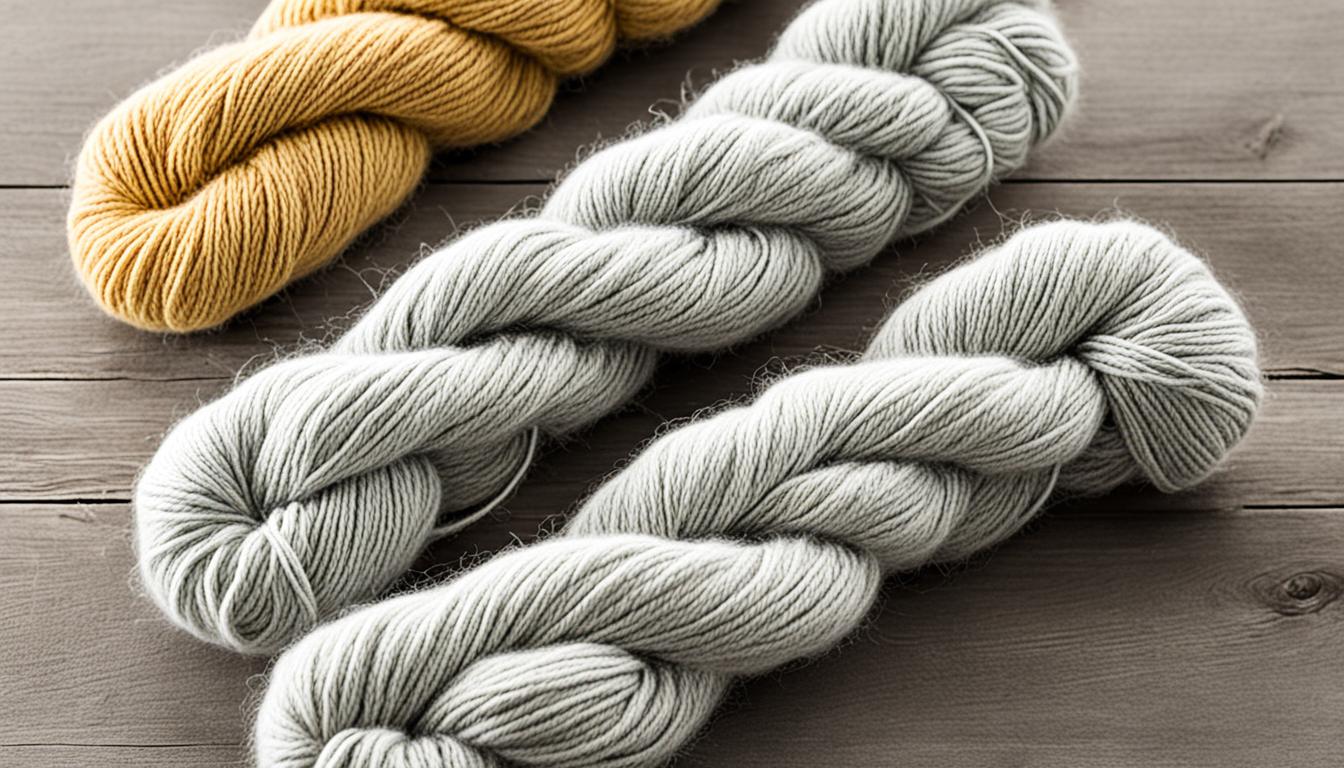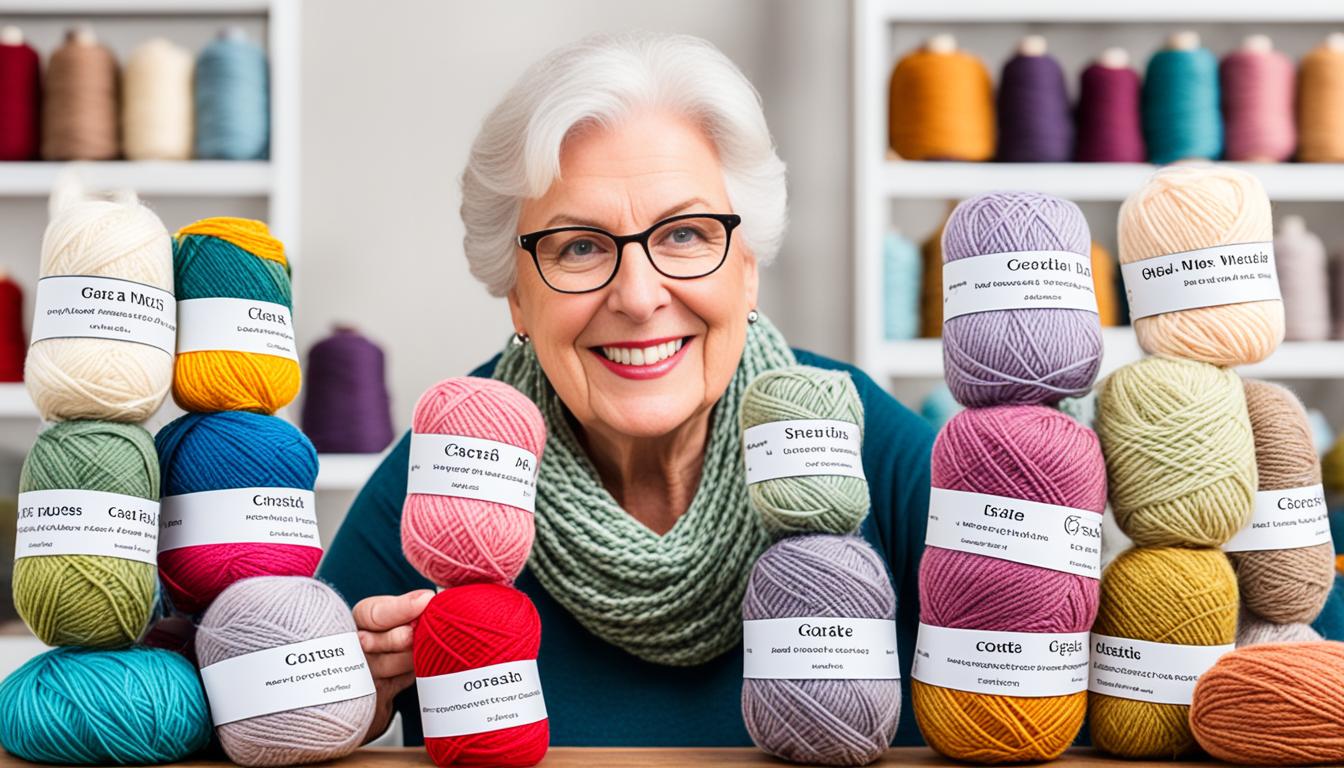When planning a knitting or crochet project, it’s crucial to determine the amount of yarn needed for a hat. The specific yardage will vary based on factors like yarn weight and hat size. Here is an approximate guide on yarn requirements for different hat sizes and yarn weights according to our sources.
Key Takeaways:
- Understanding the amount of yarn needed for a hat is crucial in planning your knitting or crochet project.
- Yarn requirements vary based on factors such as hat size and yarn weight.
- Considerations such as the recommended gauge in the pattern and any modifications you plan to make can also affect yarn consumption.
- Purchasing slightly more yarn than you think you’ll need is a good practice to avoid running out.
- Stay tuned as we explore different hat sizes and yarn weights to give you a better understanding of how much yarn it takes to make one.
Now, let’s dive into the details and answer the question: How much yarn does it actually take to make a hat?
Yarn Quantities for Hats
When it comes to determining the yarn quantity required for knitting or crocheting a hat, there are two key factors to consider: the size of the hat and the weight of the yarn. By understanding these elements, you can estimate the amount of yarn needed for your project accurately.
To help you with your calculations, we have compiled estimations for different hat sizes and yarn weights. Please keep in mind that these are general guidelines, and actual yardage may vary depending on your individual tension and stitching style. Nevertheless, these estimations should provide you with a good starting point.
| Hat Size | Yarn Weight | Yardage |
|---|---|---|
| Newborn | Fingering | 150-200 yards |
| Baby | Sport | 200-250 yards |
| Child/Teenager | Worsted | 250-300 yards |
| Adult | Worsted | 300-400 yards |
| Adult (Slouchy) | Worsted | 350-450 yards |
For instance, if you are making a newborn-sized hat using fingering weight yarn, you would typically need approximately 150-200 yards.
To estimate yarn consumption for a different hat size or yarn weight, you can use the following formula:
Yarn Quantity = Hat Circumference (in inches) x Yarn Consumption Factor (in yards per inch)
Remember to consider any additional elements you may add to your hat, such as pompoms or embellishments, as they may require extra yarn.
Keep in mind that these estimations are just starting points. Factors such as stitch pattern, stitch tension, and individual differences in technique can affect yarn consumption. We recommend making a gauge swatch before starting your project to have a more accurate estimate of your personal yarn consumption.
Factors to Consider When Choosing Yarn for a Hat
When it comes to selecting the perfect yarn for your hat, there are a few important factors to keep in mind – the weight of the yarn, the recommended gauge in the pattern, and any personal modifications you plan to make. By considering these factors, you can ensure that you choose a yarn that not only matches the pattern’s requirements but also provides the right yardage for your hat.
The weight of the yarn is a crucial consideration. Different weights of yarn will produce hats with different textures and drape. The recommended weight for your hat pattern will dictate the yardage needed. For example, a lightweight yarn such as fingering or sport weight will require more yarn compared to a chunky or bulky weight yarn.
“When choosing yarn for a hat, consider both the weight of the yarn and the recommended gauge in the pattern. These details will help you determine the right yardage for your project.” – Expert Knitter
The recommended gauge in the pattern is another essential factor when choosing yarn for a hat. The gauge refers to the number of stitches and rows per inch. It is crucial to match the gauge specified in the pattern to ensure that your hat turns out the correct size. If your gauge differs, it can significantly impact the yardage required.
Match the Gauge: Key to Success
It’s important to remember that even small variations in gauge can result in significant differences in yardage. If your stitches are too tight, you will use more yarn, while looser stitches will require less. Therefore, it’s essential to swatch and check your gauge before starting your hat to ensure accuracy in your yarn yardage calculation.
Finally, any personal modifications you plan to make to the pattern can also affect the amount of yarn needed. For instance, if you decide to add extra length or make the hat slouchier, it’s crucial to account for these modifications when calculating the required yardage.
Our Pro Tip: When choosing yarn for your hat, we recommend purchasing slightly more yarn than you think you’ll need. It’s better to have a little extra yarn than to run out in the middle of your project.
By carefully considering the weight of the yarn, the recommended gauge in the pattern, and any personal modifications, you can confidently choose the right yarn for your hat and ensure that you have enough yarn to complete your project without any setbacks.
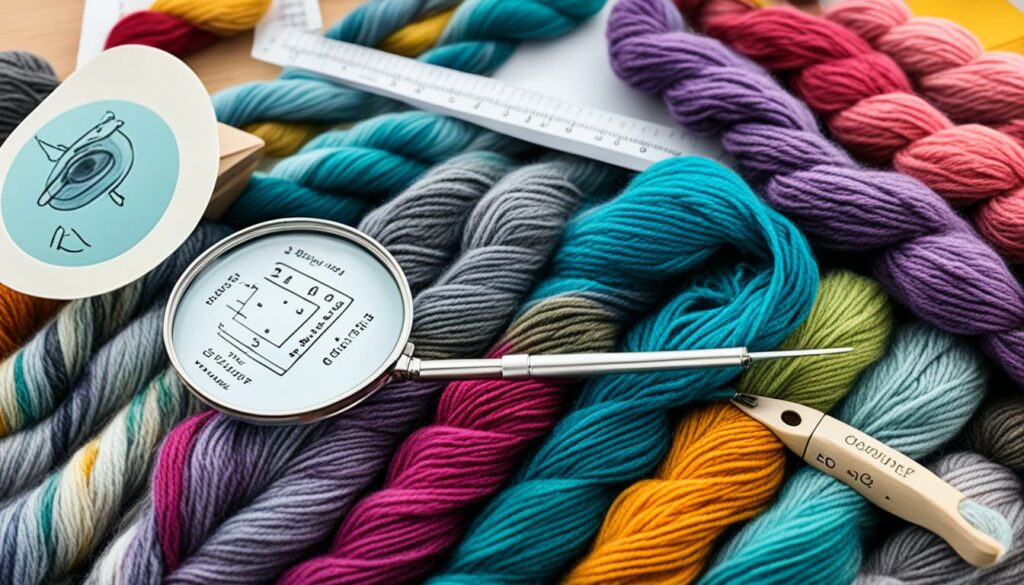
Tips for Calculating Yardage for Hat Patterns
To ensure you have enough yarn for your hat project, it’s essential to calculate the yardage accurately. Consider the recommended gauge and yardage provided in the pattern as a starting point for your calculations.
Calculating yarn for hat: Start by determining the weight of the yarn you plan to use. Different yarn weights require different amounts of yardage. Consult the pattern for the recommended weight and determine if you will be using the same weight or making any modifications.
Adjusting for modifications: If you plan to make modifications to the pattern, such as changing the hat size or adding extra length, you may need to adjust the yardage accordingly. Keep in mind that modifying the pattern may require more or less yarn than specified.
Gauge swatch: Before starting your project, it’s crucial to make a gauge swatch. The gauge swatch helps determine the number of stitches and rows in a given measurement. By comparing your swatch to the recommended gauge in the pattern, you can ensure accurate yardage calculation.
Calculating hat yarn amount: Take the number of stitches in the pattern and multiply it by the number of inches or centimeters per stitch. Then, multiply that number by the number of rows in the pattern. This will give you an estimate of the total yarn consumption for the hat.
Keep in mind that the yardage calculation may vary depending on your tension and crocheting or knitting style. If you are unsure about your tension, it’s always a good idea to calculate a bit extra yardage to ensure you have enough yarn to complete your project.
Pro Tips:
- If you plan to use a different yarn weight than recommended, you can calculate the difference in yardage based on the weight conversions provided by yarn manufacturers.
- Check the yardage on the yarn label and compare it to the pattern’s recommendations. This will help you determine how much additional yarn you may need to purchase if the recommended yardage falls short.
Remember, it’s better to have a little extra yarn than to run out in the middle of your project. Having an estimate of the yarn amount needed will help you better plan your crafting and avoid any unexpected surprises.
Now that you have the tips for calculating yardage, you’re ready to get started on your hat project. Happy knitting or crocheting!
Yarn Quantities for Other Projects
In addition to hats, there are plenty of other exciting crochet projects you might want to take on. Whether you’re making a cozy scarf for the winter or a soft baby blanket for a little one, it’s essential to know how much yarn you’ll need to complete each project successfully.
Yarn Quantities for Scarves
When it comes to scarves, the required amount of yarn will depend on the desired length, width, and stitch pattern. As a general guideline, consider the following:
For an average-sized scarf:
- Lightweight yarn (DK or sport weight): 2 to 3 skeins
- Medium-weight yarn (worsted or aran weight): 1 to 2 skeins
- Chunky or bulky yarn: 1 skein
Keep in mind that these estimates are based on a standard scarf size of approximately 60 inches long and 6 to 8 inches wide. If you prefer a longer or wider scarf or plan to use lace or intricate stitch patterns, you may need to adjust the yarn quantities accordingly.
Yarn Quantities for Baby Blankets
When making a baby blanket, it’s important to choose a soft and comfortable yarn that is suitable for sensitive skin. The amount of yarn required for a baby blanket will depend on the desired size, stitch pattern, and yarn weight. Here’s a general idea of the yarn quantities:
For a standard-size baby blanket (approximately 30 x 36 inches):
- Lightweight yarn (DK or sport weight): 5 to 7 skeins
- Medium-weight yarn (worsted or aran weight): 4 to 6 skeins
- Chunky or bulky yarn: 3 to 4 skeins
Remember, these estimates are based on an average-sized baby blanket. If you’re planning to make a smaller or larger blanket or incorporating complex stitch patterns, you may need to adjust the yarn quantities accordingly.
Exploring Further Projects
These are just a few examples of yarn quantities for specific projects. For other crochet endeavors such as shawls, sweaters, or even home décor items, it’s always best to consult a pattern and follow the recommended yarn requirements. Each project may have unique considerations based on size, stitch complexity, and desired drape or texture. Don’t forget to consider your personal gauge and tension, as these elements can also impact the amount of yarn needed to complete your project.
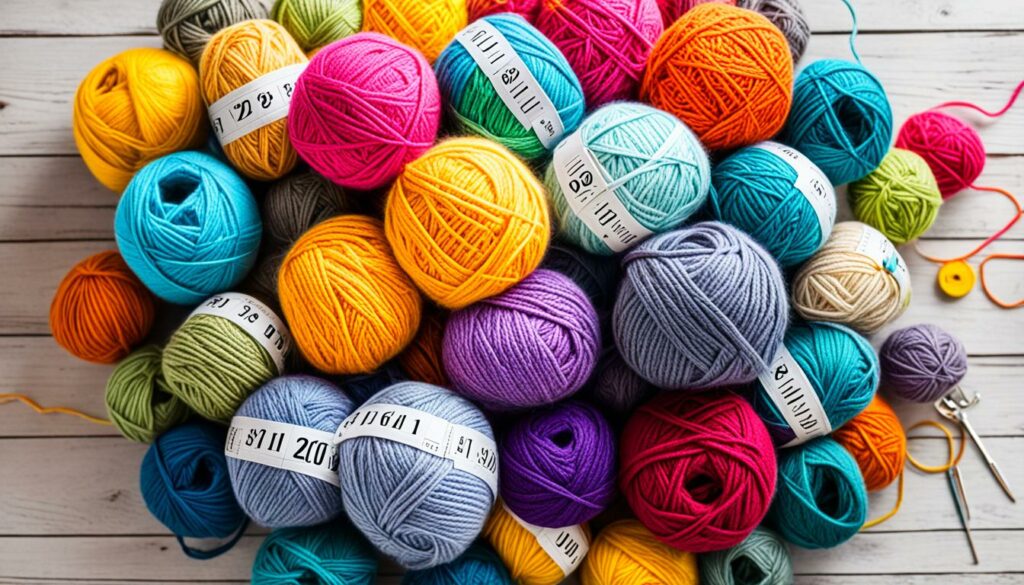
| Project | Yarn Weight | Yardage |
|---|---|---|
| Scarf | Lightweight | Approximately 300-500 yards |
| Scarf | Medium-weight | Approximately 200-400 yards |
| Scarf | Chunky/bulky | Approximately 100-300 yards |
| Baby Blanket | Lightweight | Approximately 1500-2000 yards |
| Baby Blanket | Medium-weight | Approximately 1200-1800 yards |
| Baby Blanket | Chunky/bulky | Approximately 900-1200 yards |
Tips for Buying Yarn
When it comes to purchasing yarn for your next project, we have some helpful tips to ensure you have enough and achieve the desired result.
Buy Enough Yarn
One of the most important tips for buying yarn is to make sure you buy enough for your project. It can be frustrating to run out of yarn in the middle of a project and not be able to find the same dye lot again. Our sources recommend buying slightly more yarn than you think you’ll need to be on the safe side.
Matching Dye Lot
Another important consideration when buying yarn is to check the dye lot. Yarns are manufactured in batches, and even within the same color, there can be slight shade variations between different dye lots. To ensure consistency in your project, it’s best to buy all the yarn you need at once and make sure it’s from the same dye lot.
“Buying enough yarn and ensuring it’s from the same dye lot are crucial for a seamless and uniform finished project.” -KnittingExpert123
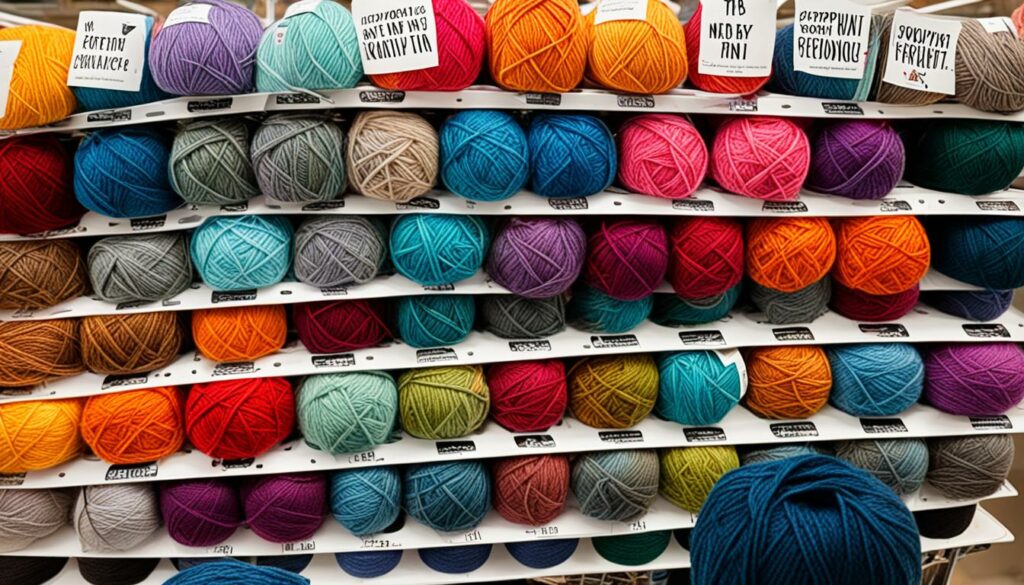
By following these tips for buying yarn, you can avoid the frustration of running out of yarn and ensure a beautiful, consistent project. Happy knitting or crocheting!
Yarn Quantities for Different Garments
If you’re interested in knitting or crocheting garments, you might be wondering how much wool you’ll need for a jumper or cardigan, or how much wool is required for a blanket. The amount of yarn needed for these projects will depend on several factors such as the size of the garment and the pattern you choose.
For a jumper or cardigan, the yarn quantity will also vary depending on the design, including the length of the sleeves and body. Additionally, the thickness of the yarn you plan to use will impact the amount needed. Thicker yarns generally require less total yardage, while finer and lighter weight yarns may require more.
Similarly, the amount of yarn needed for a blanket will depend on the desired size, stitch pattern, and yarn weight. Larger blankets will naturally require more yarn, and complex stitch patterns may also use up more yardage. Keep in mind that blankets tend to require a significant amount of yarn, so it’s advisable to purchase extra to ensure you have enough for your project.
It’s always better to have slightly more yarn than you think you’ll need, especially for larger projects like jumpers, cardigans, and blankets. Running out of yarn mid-project can be frustrating and impact the overall finished look.
Here’s a general guideline for estimating the amount of yarn you’ll need for these garments:
| Garment | Approximate Yardage |
|---|---|
| Jumper | Varies depending on size and design |
| Cardigan | Varies depending on size and design |
| Blanket | Varies depending on desired size and stitch pattern |
It’s important to note that the table above provides only rough estimates. The exact yardage will vary depending on your knitting or crochet tension, yarn weight, and personal gauge. Always refer to the specific pattern you’re using for a more accurate estimation of the yarn required.
To get a better idea of the amount of yarn you’ll need, consider making a gauge swatch and measuring your tension. This will help you determine how many stitches and rows you’re getting per inch and ensure a more precise estimation of yarn consumption.
Remember, these are general guidelines, and it’s always a good idea to consult the pattern you’re working with for specific yardage recommendations. Having a little extra yarn on hand can save you from any unforeseen mishaps and ensure you complete your garment or blanket with ease.
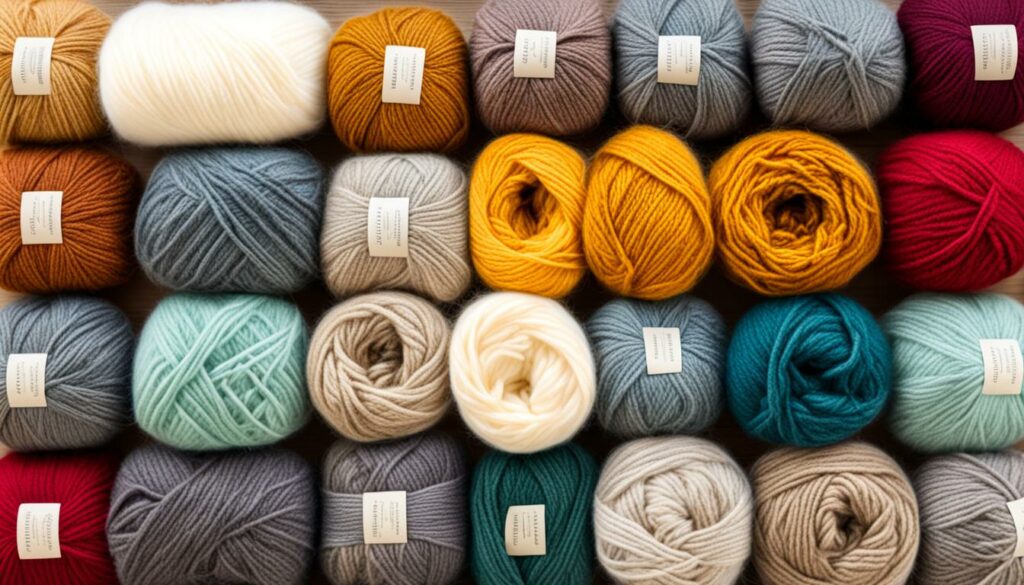
Considerations for Crochet Projects
When it comes to crochet projects, it’s important to consider that crochet typically uses more yarn compared to knitting. Crochet stitches tend to be thicker and more textured, requiring additional yarn to achieve the desired results. To ensure you have enough yarn for your crochet project, we recommend adding around 30% more to your yardage estimate compared to knitting projects.
By accounting for this extra yarn, you’ll have a buffer in case your crochet stitches use more yarn than anticipated. Plus, it’s always better to have a little extra yarn than not enough, ensuring you can complete your project without worrying about running out.
Here’s an example to illustrate this further:
| Crochet Project | Yarn Quantity Estimate |
|---|---|
| Small Crochet Hat | 150 yards |
| 30% Extra Yarn | 195 yards |
In this example, if the estimated yardage for a small crochet hat is 150 yards, we recommend adding an extra 45 yards (30% of 150 yards) to ensure you have enough yarn to complete the project successfully.
Why does crochet require more yarn?
The main reason crochet projects require more yarn is the nature of crochet stitches. Crochet stitches are bulkier and typically use more yarn per stitch compared to knitting. The increased yarn consumption is due to the structure of various crochet stitches, such as double crochet, treble crochet, and more.
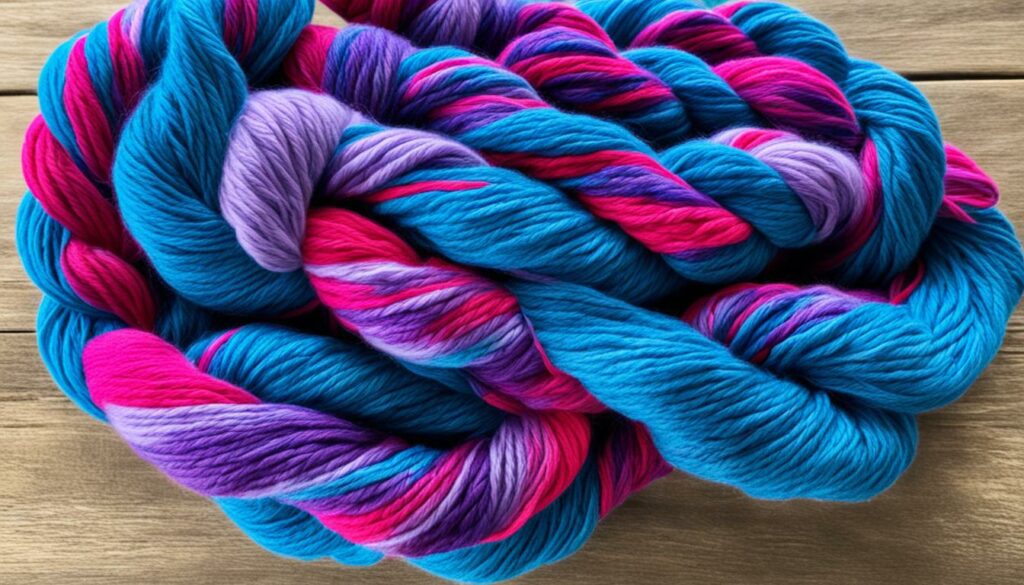
As the image shows, crochet stitches have multiple loops and more yarn wrapped around the hook, resulting in a denser fabric that requires more yarn.
Therefore, when planning a crochet project, keep in mind the additional yarn needed to achieve the desired outcome. Adding that extra 30% to your yardage estimate will give you the peace of mind and flexibility to complete your project without any hiccups.
Factors Affecting Yarn Consumption
When it comes to estimating the amount of yarn needed for a project, several factors can affect yarn consumption. Understanding these factors is essential to ensure you have enough yarn to complete your knitting or crochet project.
Variations in Yarn Weight: The weight of the yarn you choose can have a significant impact on how much yarn your project will require. Yarns come in different weights, such as lace, fingering, sport, dk, worsted, and bulky. Thicker yarns generally cover more area with fewer stitches, while thinner yarns may require more stitches to achieve the same size. Considering the weight of the yarn is crucial to accurately determine the required yardage.
Tension and Gauge: Tension refers to how tightly or loosely you work your stitches, while gauge refers to the number of stitches and rows per inch. Deviating from the recommended tension or gauge in your pattern can affect yarn consumption. Tighter tension or smaller gauge may use less yarn, whereas looser tension or larger gauge may require more yarn. It’s important to keep your tension and gauge consistent throughout your project to avoid any unexpected variations in yarn usage.
Pattern Variations: Different patterns may have variations in stitch patterns, sizing, and overall design, leading to differences in yarn requirements. Some patterns may use more intricate stitch patterns that consume more yarn, while others may have simpler designs that require less yarn. It’s crucial to carefully review the pattern’s instructions and consider any variations that may impact your yarn consumption estimates.
Personal Modifications: Making personal modifications to a pattern, such as adjusting the size, altering the stitch pattern, or adding embellishments, can also impact the amount of yarn needed. Any changes you make to the pattern may require additional yarn to accommodate your modifications. It’s important to consider these modifications when estimating your yarn consumption.
To get an accurate estimation of the yarn required for your project, it’s advisable to consult the pattern instructions and make a gauge swatch beforehand. By considering variations in yarn weight, tension, gauge, pattern specifications, and personal modifications, you can ensure you have enough yarn to complete your project without running out.
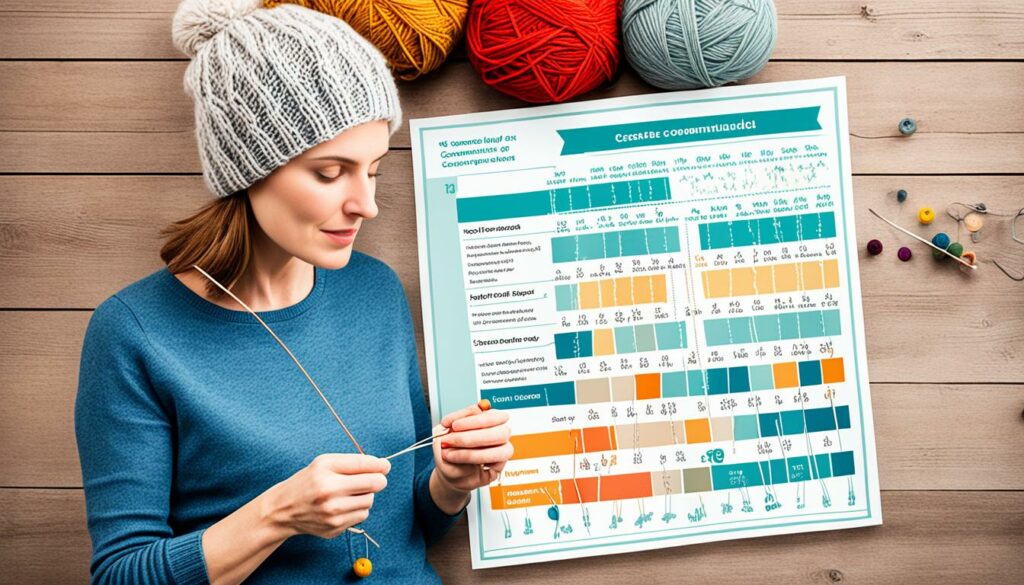
Summary Table: Factors Affecting Yarn Consumption
| Factor | Impact on Yarn Consumption |
|---|---|
| Variations in Yarn Weight | Different yarn weights require different amounts of yarn for the same project. |
| Tension and Gauge | Deviation from recommended tension or gauge can result in increased or decreased yarn consumption. |
| Pattern Variations | Patterns with intricate stitch patterns or larger sizes may require more yarn. |
| Personal Modifications | Modifying a pattern can impact yarn consumption, requiring additional yarn for alterations. |
Conclusion
Knowing how much yarn you’ll need for a hat or any other project is crucial for a successful knitting or crochet experience. By considering factors such as yarn weight, pattern specifications, and personal modifications, you can make an informed decision on the amount of yarn to purchase.
Remember, it’s always better to have slightly more yarn than you think you’ll need to avoid running out. Purchasing extra yarn ensures that you have enough to complete your project without any last-minute stress. Whether you’re a beginner or an experienced crafter, having ample yarn on hand allows you to freely experiment and modify your project as you go.
Happy crafting! Enjoy the process of creating beautiful, handmade items with the perfect amount of yarn. With careful planning and a little extra, you’ll be well-prepared to bring your knitting or crochet ideas to life. Get ready to immerse yourself in the joy of crafting and embrace the satisfaction of completing your projects with ease.
